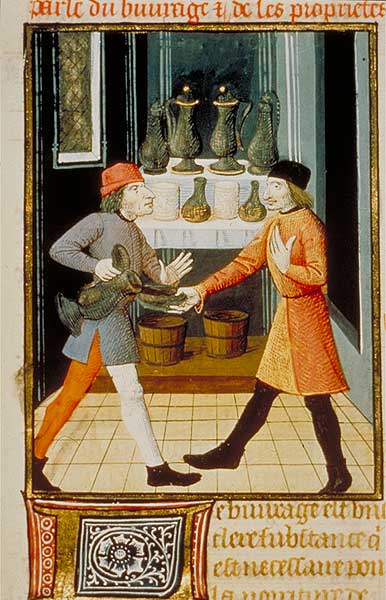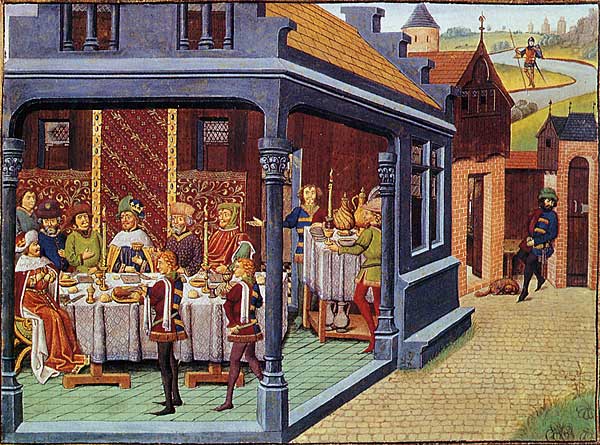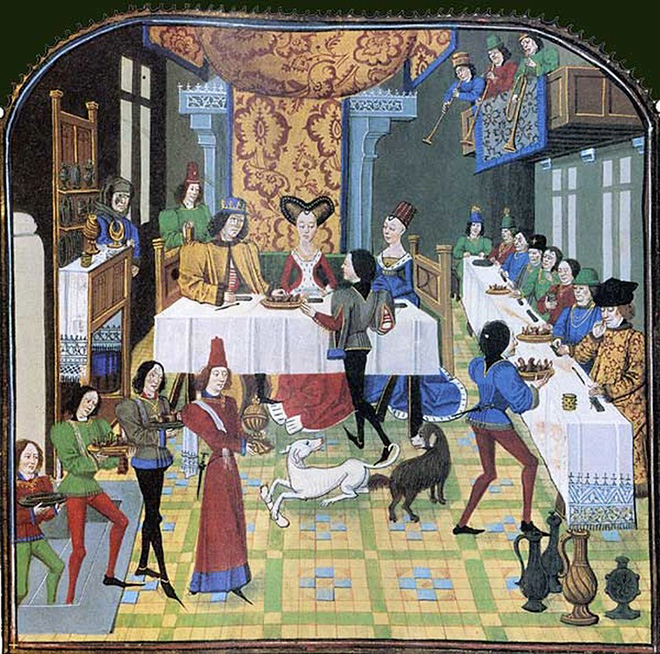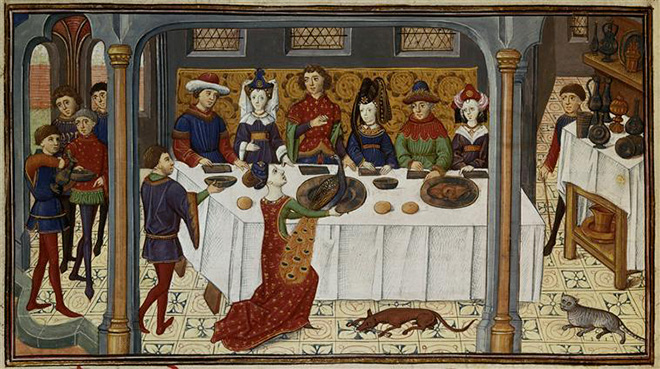DAILY LIFE – KITCHEN

Pair of Gothic candlesticks
- About 1500
- Gilded bronze
- Germany
The bobeche, where the candle was set, is made up of a dish and a rivetted iron spike.

Dresser
- First third of 16th century
- Oak, wrought iron
- Flanders
The dresser is used to display tableware to guests.

Small bench
- 15th century
- Oak
- Flanders
« Folded parchment » or « napkin fold » panels, like the façade of the bench here, were inspired by the shapes produced by leather when it hardens.

Candlestick with double revolving branches and a pierced binet*
- 15th century
- Brass
- Flanders
This kind of candlestick has a spike where the candles were set.
* A small utensil placed in the candlestick to make sure the candle burns to the end.

Stew spoons – Individual spoons
- 15th century
- Bronze
People would often carry their own spoons around with them, as people sometimes carry pocket knives today.

Wash bowl
- 16th century
- Bronze
The wash bowl is a kind of pot to be hung up. It has two spouts and was used for washing hands.
![]()
Mérode Triptych – Robert Campin, 1427 wash bowl

Medieval jugs
- 13th and 15th centuries
- Glazed clay, terra cotta and sandstone
- France and Normandy
In the Middle Ages, the jug was part of ordinary tableware, along with the cup, bowl, plate and pot. Among other things, it was used to serve wine.
Here we can see a Pegau, a kind of jug with a large belly and a handle attached to it half way down, which was used to draw wine from the barrel.

Small oil lamp
- 12th century
- Bronze
- Zoroastrian community, Iran
This oil lamp was used in Iranian temples by followers of the Zoroastrian religion to honour fire as a divine symbol.





